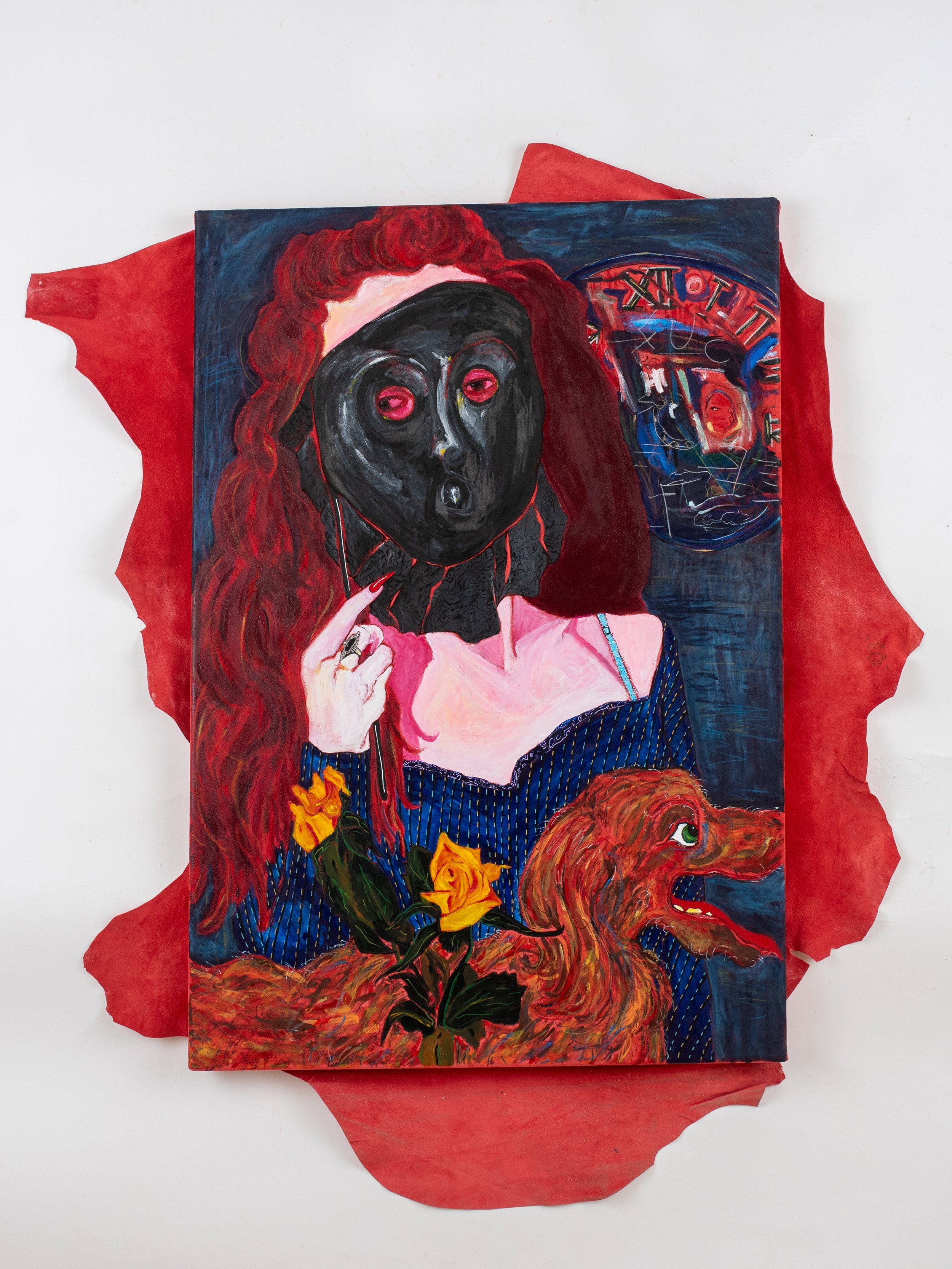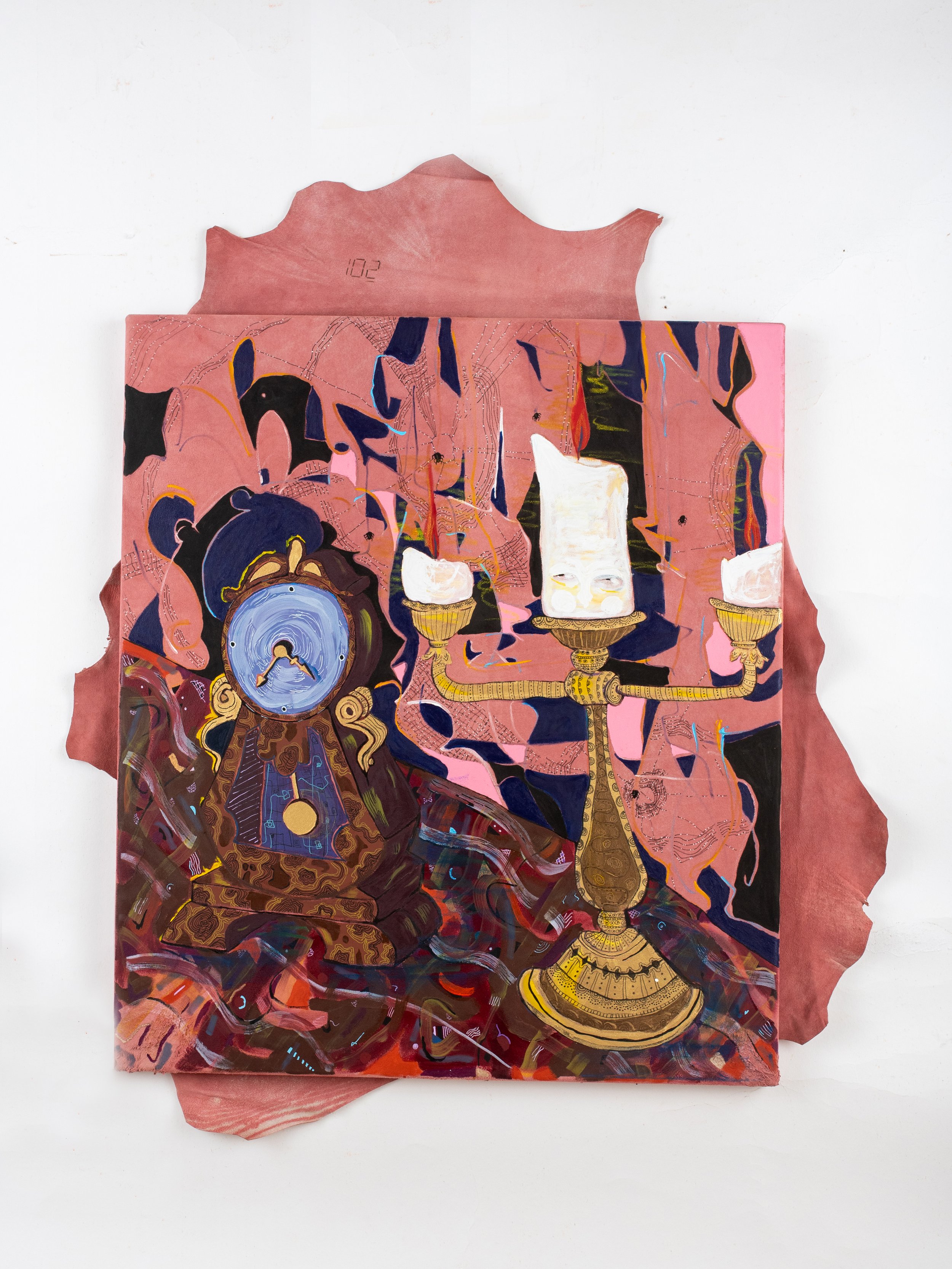Shir Moran
The view from the window of Shir Moran’s house in south Tel Aviv is of a neglected parking lot. After dark, the area pulsates with life; hookers, johns and drug addicts leave traces that are visible the morning after. The painting, and the title of this exhibition, originated in an image that became etched in the artist’s memory. In the early morning hours, a pretty, young woman, probably a drug addict, crouches in the parking lot behind a row of cars, hiding from some unseen threat.
Moran uses varying degrees of compression and intensity to etch, score, draw and smear the leather. The artistic acts—the dragging of paint brushes and scrub brushes and tools for piercing, across the “canvas”—harness dimensions of violence and exploitation. A belt that replaces a missing hand, or that emerges from a figure’s behind completes the flow of the internal painterly act into gazing at the picture as an object. The action leaks out.
In many of the works, Moran has divided the leather by first cutting and then working almost intuitively and often repetitively on the various parts. Thus, the encounters between the different parts of the painting appear like fluid or circular transitions between aggregate states. Each work has a total independent movement and each section a separate internal one. But the distinctiveness of the parts is clearly fluid, osmotic, non-hermetic. And it glides down the wall, into all the objects in the “exhibition” format.
Moran does not create perspective in a technical way. Rather, it emerges from the relationships of the surfaces. The rich patterns spread over the leather create foreground and background, but within this they do not build an illusion of light and shadow. Their flatness conjures the image’s movement and depth. Thus, even a flat image, in its broad sense (looking at a woman as an object, the dissolution of a child to the point of its being merely a means, viewing an animal as a tool), both embodies and presents a complex and layered picture. In other words, flattening as a painterly strategy is what points to the image’s depth, problematic nature and complexity.
All the paintings in the exhibition have humorous or enigmatic titles that beg to be deciphered. Moran “concludes” the process by placing the viewer in the same ambiguous moral field. On the one hand, the collector or critic appropriates the flat image for their own pleasure. On the other, the thinking reader is asked to study the work in light of its particular, charged, multivalent title.
written by Noam Segal



















































